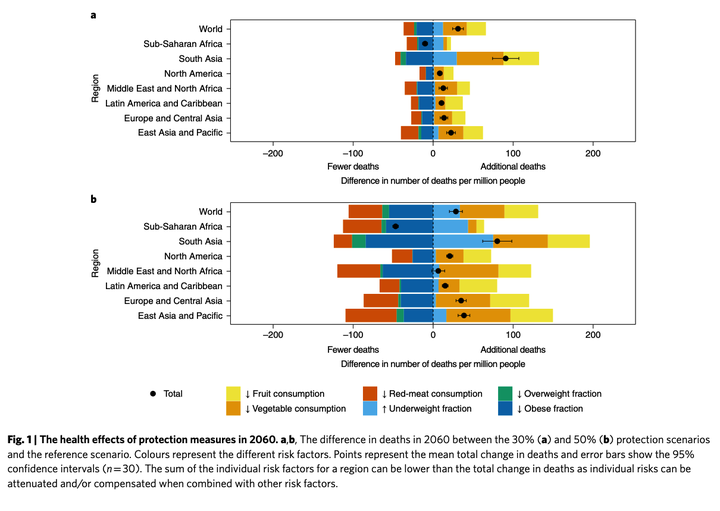Global and regional health and food security under strict conservation scenarios

Abstract
Global biodiversity is rapidly declining, and goals to halt biodiversity loss, such as the Aichi Biodiversity Targets, have not been achieved. To avoid further biodiversity loss, area-based protection will form part of new biodiversity targets. We use a state-of-the-art global land-use model, the Land System Modular Model, to explore global and regional human health and food security outcomes under strictly enforced 30% and 50% land protection scenarios. We find protection scenarios cause additional human mortality due to diet- and weight-related changes. Low-income regions such as South Asia and sub-Saharan Africa experience the highest levels of underweight-related mortality, causing an additional 200,000 deaths related to malnutrition in these regions alone. High-income regions, by contrast, are less affected by protection measures. Our results highlight that radical measures to protect areas of biodiversity value may jeopardize food security and human health in the most vulnerable regions of the world. Land conservation remains one of the biggest tools to try to maintain biodiversity targets. This study examines how strict conservation goals of 30% and 50% of global land area could impact human health and food security.